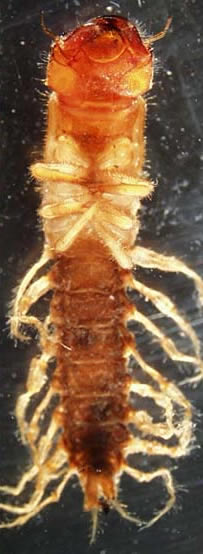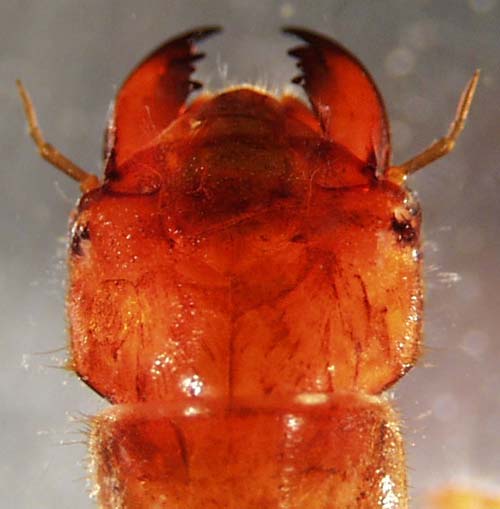
THE XERCES SOCIETY FOR INVERTEBRATE CONSERVATION Aquatic Invertebrates in Pacific Northwest Freshwater Wetlands |
| Identify taxa |
Corydalidae |
|||
|
The family Corydalidae includes dobsonflies (Corydalus) and fishflies (all other genera). Corydalidae larvae are called hellgrammites; mature larvae can be surprisingly large (up to 90 mm). In the Northwest, they are typically found in rocky bottomed mountain streams. In the eastern US, these large predators can even be found in some urban streams. Corydalid larvae have long flattened bodies and robust toothed jaws. Hard plates cover the top of each throacic segment, and there are flexible gills on each abdominal segment. Unlike the alderflies, corydalid larvae have two short fleshy prolegs at the end of their abdomen; each proleg has 2 sharp hooks at the tip. |
|
Size: large to xlarge Identifying feature(s): large size; plate on each thoracic segment; pair of prolegs at end of abdomen, each with a pair of hooks. Habitat: streams |
 |
|
© 2007 Xerces Society
Contact info@xerces.org


